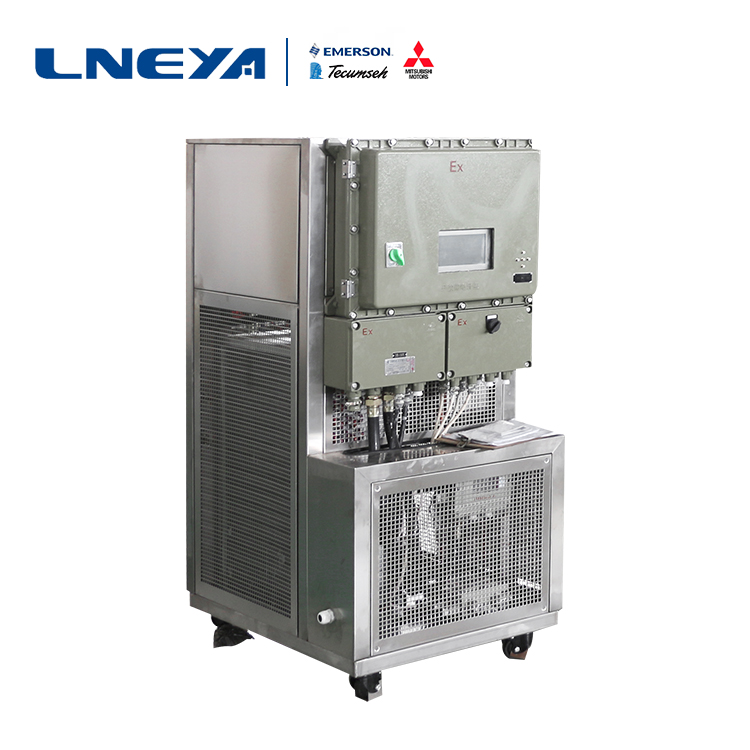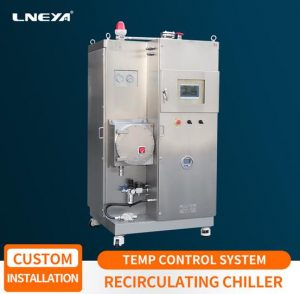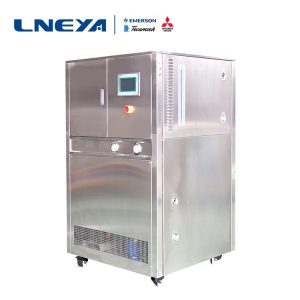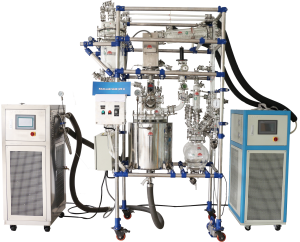Bioreactor temperature rise and temperature control equipment
A bioreactor is a reaction system in which a naturally occurring microorganism or a microorganism having a special degrading ability is inoculated into a liquid phase or a solid phase. The two reactors currently studied the most are “elevator type reactors” and “soil mud reactors”. The elevator type reactor provides the proper nutrients, carbon sources and oxygen through the flow of the aqueous phase to achieve the purpose of degrading pollutants in the soil. Compared to solid phase systems, bioreactors are capable of effectively degrading contaminants in less time.
Bioreactors sound strange, but the basic principles are quite simple. The stomach is a complex bioreactor that processes food inside the body. The food is digested by various enzymes in the stomach and becomes a nutrient that we can absorb. Bioengineering bioreactors are functions that mimic the function of living organisms in vitro and are designed to produce or test various chemical reaction devices. In other words, a bioreactor is a device system that uses a biological function of an enzyme or an organism (such as a microorganism) to perform a biochemical reaction in vitro, and is a biological function simulator such as a fermentor, an immobilized enzyme, or an immobilized cell. Reactor, etc. Then the problem of how to cool the bioreactor is generated.

Wuxi Guanya LNEYA refrigeration heating temperature control system adopts fully enclosed pipeline design, adopts high efficiency plate heat exchanger, and is applied to the temperature rise and temperature control of glass reactor, metal reaction kettle and bioreactor, especially suitable for reaction process. There is a need for heat and heat release process control.
Temperature process control principle (control reactor material temperature)
TCU temperature control unit schematic
1. The method of changing the control set value can respond to the system lag in the process as soon as possible, and obtain the minimum system overshoot. The control consists of two sets of PIDs (each set of PIDs are variable) control loops. These two sets of control loops are called: the primary loop and the slave loop, and the control loop of the master loop is used as the setpoint of the slave loop. The system adopts feedforward PV, and the output of the PID operation result of the main control loop is combined with the feedforward PV signal as the set value of the slave control loop, so that the temperature change gradient is controlled to ensure the temperature control accuracy of the system. (General anti-lag cascade control)
2. A specially designed lag predictor (no model self-built tree algorithm) generates a dynamic signal yc(t) instead of the process variable y(t) as a feedback signal. An e(t) signal is generated to the controller to cause the controller to predict that there is no large hysteresis in the control, so that the controller can always generate a suitable control signal. That is to say, even if there is a large hysteresis, the dynamic signal yc(t) can keep the feedback loop working normally. While the general PID is used to control the process with significant time lag, the controller output is not suitable due to the lag time. The feedback signal keeps growing, causing the system to overshoot and even out of control.
3. Through three-point sampling (material temperature point, temperature control system outlet temperature, temperature control system inlet temperature), through our company’s own model-free self-built tree algorithm and general anti-lag cascade algorithm.
Recomendações relacionadas
-
Performance description of recirculating chiller for bioreactor
1625The recirculating chiller is suitable forthe high and low temperature reaction of various stainless steel, enamel,titanium alloy reactors, emulsifiers, injection molding machines, mixingvessels and various bioreactors. Other bioreactors in diff...
Ver detalhes -
What are the ways to use the circulating heater for the reactor in the pharmaceutical and chemical i
1777In the pharmaceutical and chemical industry, there are many reactor heaters used in the reactor industry. In the pharmaceutical chemical industry, what other heating methods besides this heating method? The heating method of the reactor circulatin...
Ver detalhes -
Como controlar a temperatura da recuperação de solventes por destilação?
16141. Se a qualidade do produto não for afetada pela presença de ar a uma temperatura mais elevada, pode ser recuperado primeiro à pressão normal e, quando a temperatura exceder o ponto de ebulição à pressão normal do dessolvente em 10 graus, quando o produto for recuperado à pressão normal...
Ver detalhes -
Quais são os componentes que melhoram o desempenho dos chillers industriais?
1853Os refrigeradores industriais são equipamentos indispensáveis na produção de LNEYA. Com o seu funcionamento normal, teremos melhor eficiência de trabalho e maior qualidade do produto. O sistema de refrigeração de um resfriador industrial é composto principalmente de quatro compo...
Ver detalhes
 LNEYA Refrigeradores industriais Fabricante Fornecedor
LNEYA Refrigeradores industriais Fabricante Fornecedor














